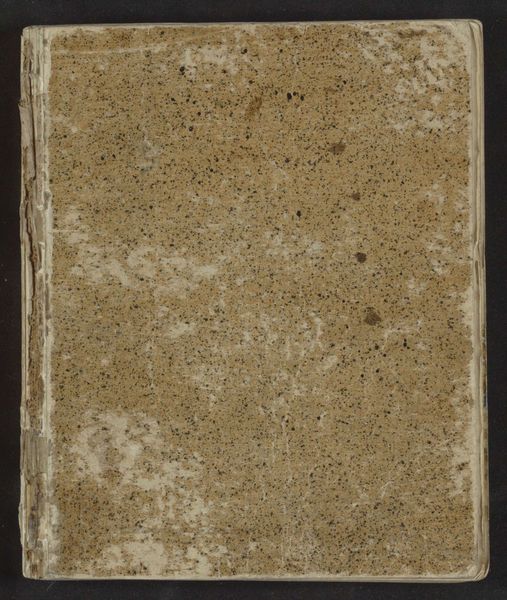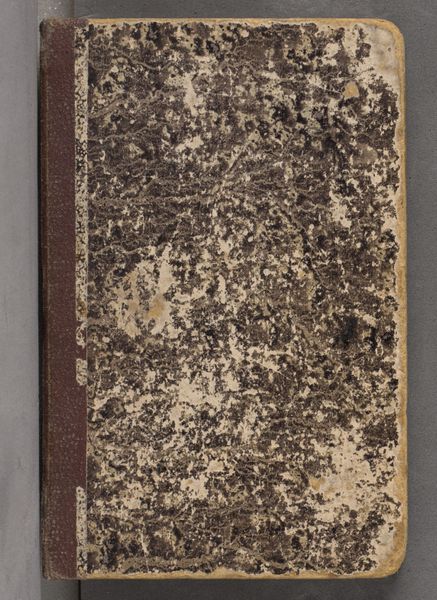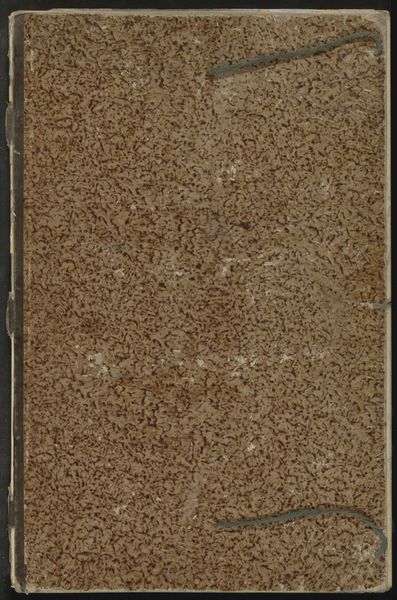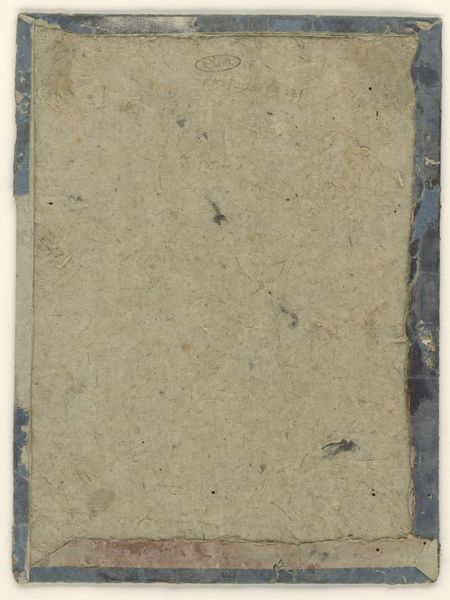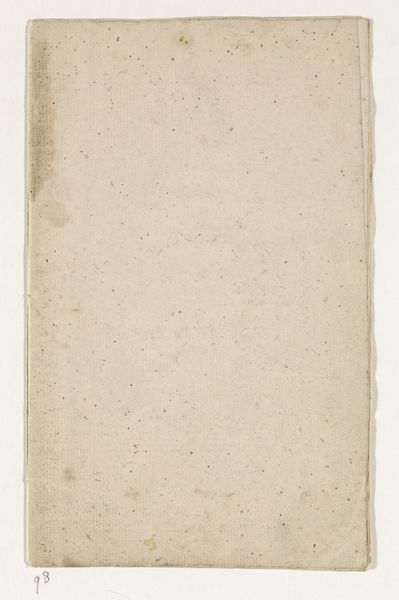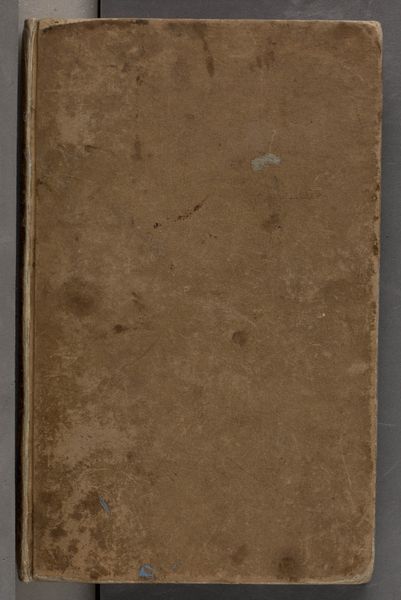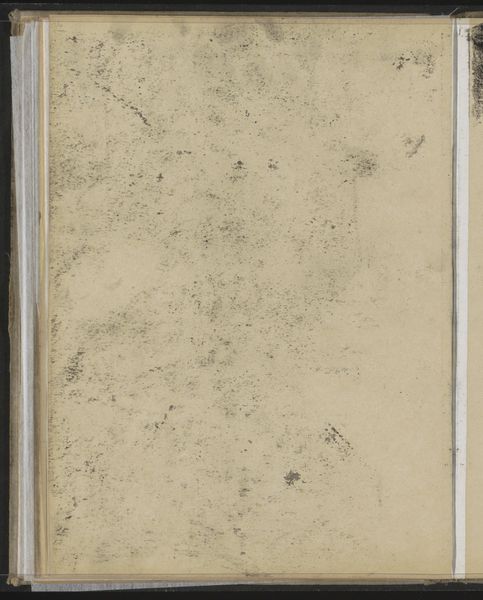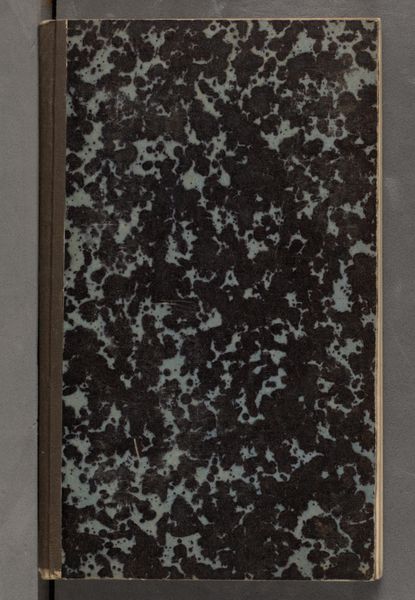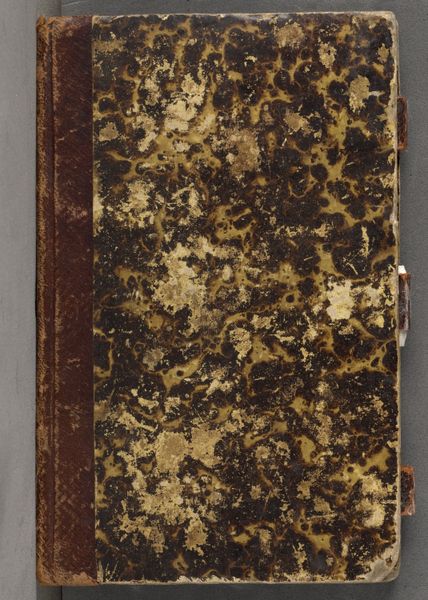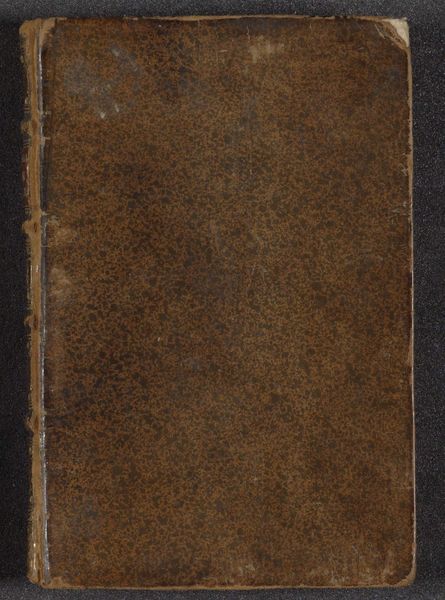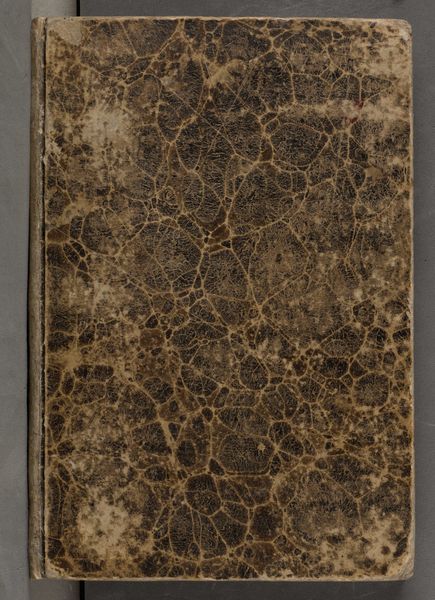
Album met voorstellingen van Chinese figuren en landschappen 1727 - 1775
0:00
0:00
pieterschenk
Rijksmuseum
mixed-media, paper
#
mixed-media
#
paper
Dimensions: height 327 mm, width 205 mm, thickness 52 mm, width 420 mm
Copyright: Rijks Museum: Open Domain
Curator: The work before us, “Album met voorstellingen van Chinese figuren en landschappen,” which translates to "Album with representations of Chinese figures and landscapes" by Pieter Schenk, dating from 1727 to 1775, is a fascinating piece currently residing in the Rijksmuseum collection, created using mixed-media on paper. Editor: Immediately, I'm struck by its weathered surface. The spattered effect creates this rather gritty feel, and the overall paleness is unexpectedly compelling, quite aged, perhaps? Curator: Yes, the texture created by the mixed media on paper plays a significant role in the artwork's visual impact. The seemingly random pattern of dark speckles against the aged paper provides a contrast that's structurally intriguing, lending itself to layers of semiotic interpretations about age, decay, and the passage of time. Editor: It prompts thoughts about the album’s creation. Consider the materials readily available during that time, and the hand that would bind these together; were they created at the leisure of wealth, or in some mass-produced print shop? Such conditions dramatically would change our interpretation of this, no? Curator: Precisely. And let's consider that Schenk was primarily known for mapmaking and printmaking, but the album represents an imagined China through largely imported and therefore commodified, landscapes and figures. Editor: That reframing lends more depth and context to those little marks – like flecks from the printer's room? I'd love to learn more about its provenance and reconstruct that hands-on aspect. Curator: The spattering itself introduces a unique dynamic. One could explore how it relates to surrealist techniques like automatism. Editor: I see that tension between apparent random process and intentional arrangement. Now it really does provoke considering how materials are intrinsically tied to the world that birthed it, right down to that patina. Curator: Well, it's certainly opened an engaging pathway for material consideration to the viewer’s journey. Editor: Definitely, the tangible evidence of its existence is far more enticing than just seeing a picture online.
Comments
No comments
Be the first to comment and join the conversation on the ultimate creative platform.
